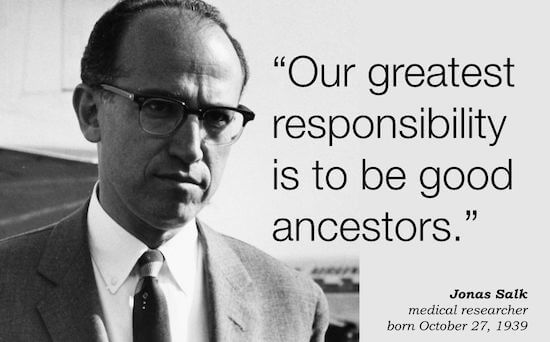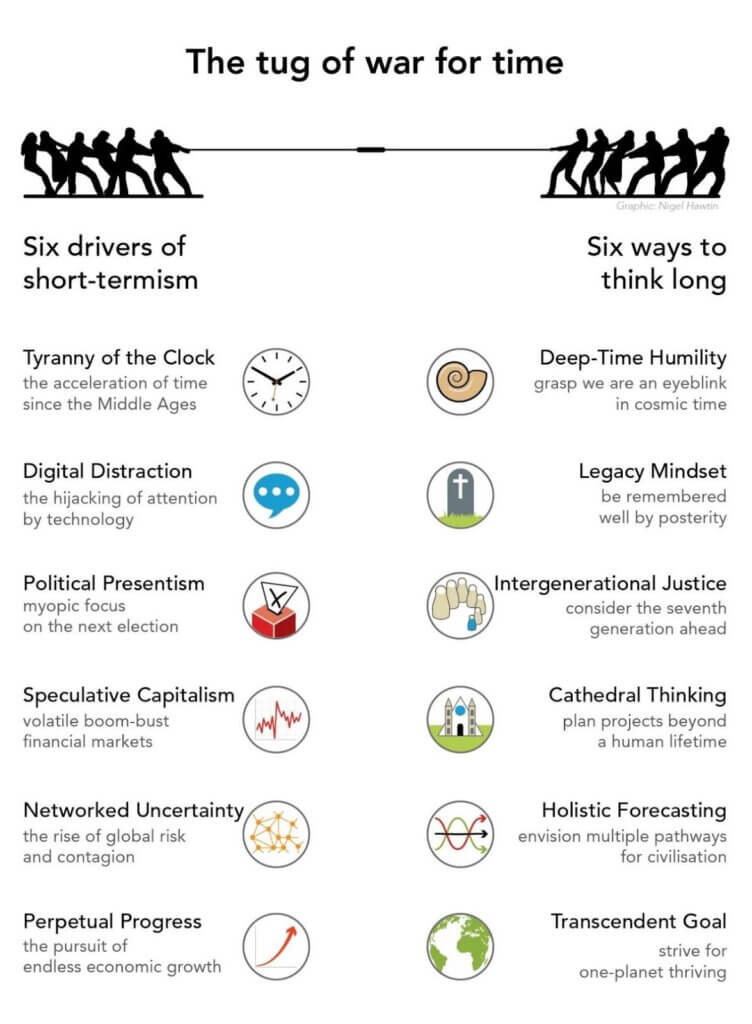
In 1955, Jonas Salk unveiled a vaccine for poliomyelitis, an infectious disease that can cause paralysis. He did not patent the vaccine, he gave it to the world. When asked by the renowned journalist Edward R. Murrow about the idea of patenting a vaccine, Salk responded: “”Could you patent the sun?”, suggesting his vaccine was natural and essential.
Since the vaccine’s discovery, polio has been largely eradicated around the world.
Salk also gave us the phrase: “Our greatest responsibility is to be good ancestors”.
As a father, I think often about my role for my sons, and my hopes for them and the part they do, can and will play for those who follow them. However, to be a good ancestor we can challenge ourselves to think far longer term than one or two generations and with the narrow focus of our family or others we know or can think of.
In 2020 Roman Krznaric published “The Good Ancestor – How to think Long Term in a Short Term world“. Core to his book are six principles, covered in this blog by the author, and in the following graphic.
For business leaders, perhaps considering seven generations ahead may stretch how far their shareholders, board, other stakeholders may understand or permit, but we can think of having a legacy mindset, and one concept I particularly anchor purpose-led leaders on is something I have written about before, “Cathedral Leadership“. One can start relatively short-term with this as a business leader by considering “will the purpose and values of this business continue once I am no longer in the business”. That is a significant starting point that can feel like a reach for some, but once that threshold of bravery and leadership is crossed, you can then start to think further ahead and think on a larger scale.
I leave you with inspiration from Gaudi, architect and designer of the magnificent Sagrada Familia. Gaudi began work on this immense cathedral in 1883 and worked on it for 43 years until his death in 1926, at which point it was only around one-quarter complete. When asked when it would be completed, he famously answered: “my client is not in a hurry”

